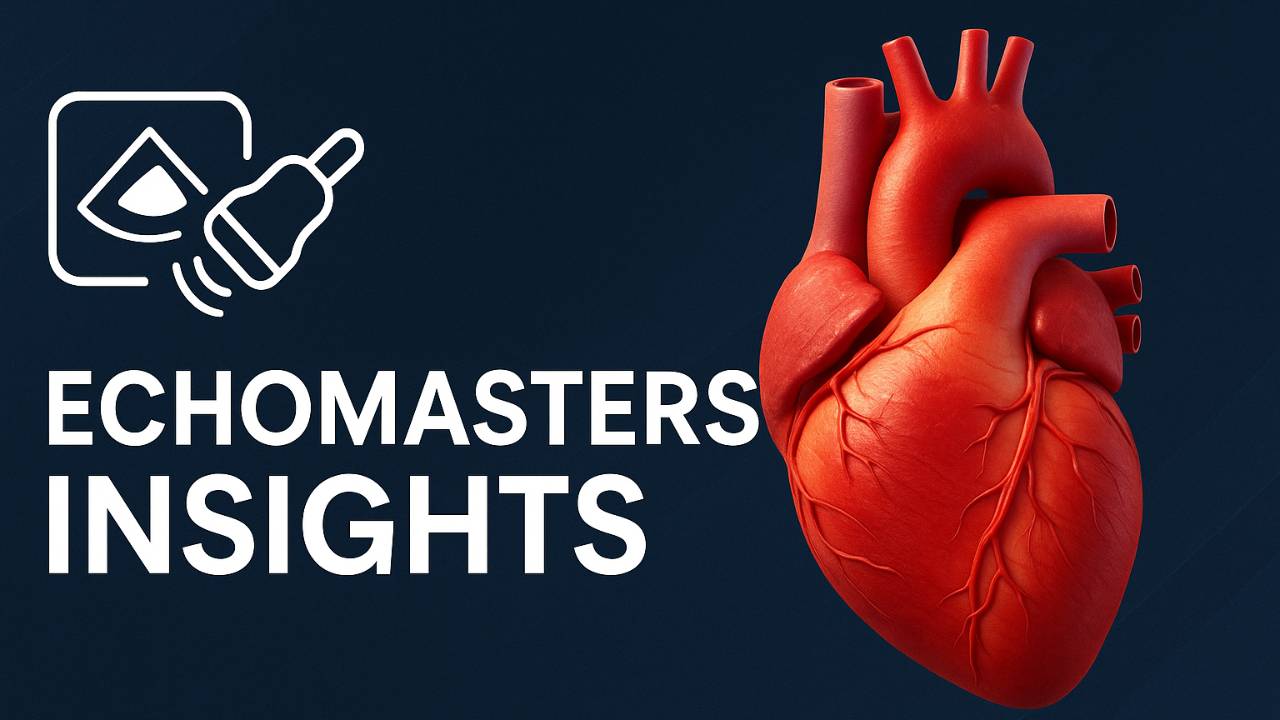Asymptomatic Severe Aortic Stenosis: Where Were We, Where Are We, Where Are We Going?
Oct 07, 2025
“Two patients. Both have severe aortic stenosis. Both feel fine. One is told to wait. The other is offered early intervention. Which one wins? And more importantly — how do we decide?”
That’s the paradox at the heart of asymptomatic severe aortic stenosis — a condition that continues to challenge traditional thinking about timing, risk, and patient-centred care. And as new evidence reshapes the landscape, the question has never been more relevant.
🔹 Why This Matters
AS is no longer a rare diagnosis. With an aging population and improved echo detection, we encounter it daily — on call, in clinics, and during MDTs.
For decades, the mantra was simple: “You’re asymptomatic. Let’s monitor.”
That approach made sense in the surgical era — when valve replacement carried higher procedural risks and prosthesis durability was limited. But time has shown that some asymptomatic patients decompensate suddenly, or return too late with irreversible LV dysfunction.
The dilemma remains: Do we risk overtreatment… or risk missing the window?
🔹 The Old Paradigm: Watchful Waiting
Historically, intervention was reserved for:
-
The onset of symptoms, or
-
LVEF < 50%
This was the era of watchful waiting — safe for many, but not for all.
Takeaway: It was a pragmatic strategy when surgery was riskier and valves were less durable — but it also left a vulnerable minority behind.
🔹 Cracks in the Wall: AVATAR & RECOVERY
The first wave of evidence challenging this paradigm came from surgical RCTs:
-
AVATAR (Circulation 2022): Early surgery reduced a composite of death, stroke, and HF hospitalisation in asymptomatic patients.
-
RECOVERY (NEJM 2020): Early SAVR in very severe AS reduced mortality.
However, both studies were small, surgical-only, and limited to highly selected populations.
They raised the question — but didn’t settle it.
🔹 The Game-Changers: EARLY TAVR & EVOLVED
Then came the TAVI era — and with it, two pivotal trials.
EARLY TAVR (NEJM 2024)
-
900+ patients, mean age 76, low surgical risk
-
TAVI (Sapien valve) vs surveillance
-
Composite endpoint (death, stroke, CV hospitalisation): 27% vs 45% in favour of TAVI
Yet the details matter:
-
Mortality: unchanged between groups
-
Hospitalisations: drove most of the difference
-
Bias risk: industry-sponsored, endpoints included QoL and admission rates
And here comes the psychological dimension — subtraction anxiety. Patients randomised to “watchful waiting” knew they had severe AS but weren’t being treated. That awareness alone may have increased perceived symptoms and hospital visits.
Takeaway: Early TAVI reduces admissions and anxiety — but hasn’t proven a survival advantage.
EVOLVED (JAMA 2025)
-
MRI-guided early surgery in asymptomatic patients with myocardial fibrosis
-
Primary endpoint: neutral
-
Still showed fewer hospitalisations and delayed symptom onset
Together, they built momentum — but left the mortality question unanswered.
🔹 The Future: EASY-AS
The study designed to finally settle the debate.
EASY-AS
-
Sponsor: University of Leicester / NIHR (academic, device-neutral)
-
~2,800 patients, surgical and TAVI candidates
-
Early AVR (surgery or TAVI) vs conservative management
-
Primary endpoint: CV death or HF hospitalisation (663 events)
-
Secondary: QoL, days alive out of hospital, disability-free survival, cost-effectiveness
-
Completion: expected ~2031
Why it matters:
-
Pragmatic and real-world, not highly selective
-
Academic design → less commercial bias
-
Includes both surgical and transcatheter approaches
-
Focus on patient-reported outcomes
Interpretation: EASY-AS will likely redefine the next decade of valve guidelines.
🔹 Guidelines in Transition
-
ESC 2021:
-
Class I: symptomatic patients or LVEF < 50%
-
Class IIa: very severe AS (Vmax >5.5 m/s), rapid progression, elevated BNP, abnormal strain/fibrosis, or strong patient preference
-
-
ESC 2025:
-
Age-based split introduced:
-
≥70 years + tricuspid AS → TAVI (Class I)
-
<70 years + low surgical risk → SAVR (Class I)
-
-
Bicuspid valves: remain case-by-case via MDT
-
Takeaway: The shift is gradual but clear — from reactive to proactive intervention.
🔹 The Human Side: Case Reflection
Case A: 70-year-old, asymptomatic, severe AS. Observed conservatively. 18 months later develops symptoms and is hospitalised before undergoing TAVI.
Case B: 75-year-old, identical echo findings, randomised in EARLY TAVR. Receives early intervention, avoids admissions and anxiety — but later wonders: “Did I need that procedure so early?”
Lesson: Every strategy carries trade-offs. Evidence guides us, but judgment defines us.
🔹 Patient-Centred Decision-Making
What patients want is often broader than survival:
-
Clarity and transparency
-
Reassurance and autonomy
-
Involvement in every step
The most important seat at the MDT table is the one labelled Patient.
🔹 Expert Reflections
-
Subtraction anxiety can distort trial results
-
Industry involvement can influence study design and endpoint selection.
-
TAVI durability in younger patients remains unproven
-
Crossovers blur trial interpretations
-
Mortality benefit still elusive
Guiding principle: Don’t treat the valve or the guideline — treat the person.
🔹 Where Are We Now?
We stand at the crossroads between tradition and innovation:
-
From watchful waiting to selective early intervention
-
From anxiety-driven follow-up to shared decision-making
-
From surgical thresholds to patient values
EASY-AS may finally provide the clarity the field needs. Until then, our best compass remains balanced, evidence-informed, patient-focused judgment.
When evidence is grey, values must guide us.
Dr Mohamed Mansour
Cardiac Imaging Specialist
EchoMasters Insights
Master Echocardiography. Lead with Confidence.
Stay Ahead in Echocardiography!
Join EchoMasters Insights for expert updates, new imaging breakthroughs, and case-based echo lessons trusted by cardiologists and sonographers across the UK.
Be the first to get guideline updates, real-world echo pearls, and exclusive invitations to upcoming courses and webinars.
(No spam — just high-value echo education.)
Written by Dr Mohamed Mansour and the EchoMasters Faculty
